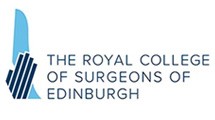Skin Cancer Surgery
Skin cancer is on the increase in the UK and it important to treat these cancers early to have the best possible prognosis. The main risk factor for skin cancers is UV light exposure, which comes from both the sun and tanning beds. There are three types of skin cancer that are common in the UK:
- Basal Cell Skin Cancer (BCC)/Rodent Ulcer
- Squamous Cell Skin Cancer (SCC)
- Melanoma Skin Cancer
Basal cell skin cancers tend to have a benign course, but Squamous cell skin cancers and melanomas if not treated early can spread and reduce overall life expectancy.
It is important to see a skin specialist (Plastic Surgeon or Dermatologist) without delay if there is a concern regarding a possible skin cancer.
Mr Huq is an expert in skin cancer surgery and is a key member of the skin cancer service at the Royal Stoke University Hospital.
What are the treatments for Skin Cancer?
The exact treatment that you will need depends on the type of skin cancer. In some cases you may require a diagnostic biopsy of the lesion. This is done to confirm the nature of the lesion prior to definitive treatment. The types of treatment include:
- Topical treatments with creams
- Cryotherapy
- Curettage
- Surgical excision
Mr Huq will advise you on the best treatment for you after a detailed discussion and examination.
Why should I see a Plastic Surgeon?
UK trained Plastic Surgery Consultants have extensive experience in dealing with skin cancers. Mr Huq has a large NHS skin cancer practice and is a key member of the Stoke and Staffordshire Skin Cancer Multidisciplinary Team (MDT). He works closely with Dermatologists and Oncologists and is able to provide you with the highest standard of care for all types of skin cancer.
Basal Cell Skin Cancer
This is the most common type of skin cancer in the UK. Although, they do not spread to other parts of the body they do need to be treated. Without treatment they will continue to grow and destroy the structures beneath the skin and hence they have the name “rodent ulcer”. They are most commonly found in the head and neck region.
Squamous Cell Skin Cancer
This is the second most common type of skin cancer in the UK. They often appear as ulcers or crusty nodules that are resistant to heal. They tend to occur on sun-exposed areas such as the head and neck region, but can also occur in scars or chronic wounds. These cancers have the potential to spread and it is therefore essential that they are diagnosed and treated early.
Melanoma Skin Cancer
This is the most serious type of skin cancer and had the ability to spread to other parts of the body such as the lymph nodes, lungs and bone. It is therefore essential that they are diagnosed and treated early.
It can be difficult to tell the difference between a melanoma and a normal-looking mole. The ABCDE list helps you know what to look for:
- A – Asymmetrical moles – irregular in shape
- B – Border of a mole – blurred or has jagged edges
- C – Colour of a mole – if a mole has more than one colour
- D – Diameter (width) – irregular moles are usually larger than 7mm
- E – Evolving – melanoma moles often change (evolve).
If you notice any of these signs, or if you have a mole that bleeds, you should see a skin specialist (Plastic surgeon or dermatologist) without delay.

 desire with
desire with



